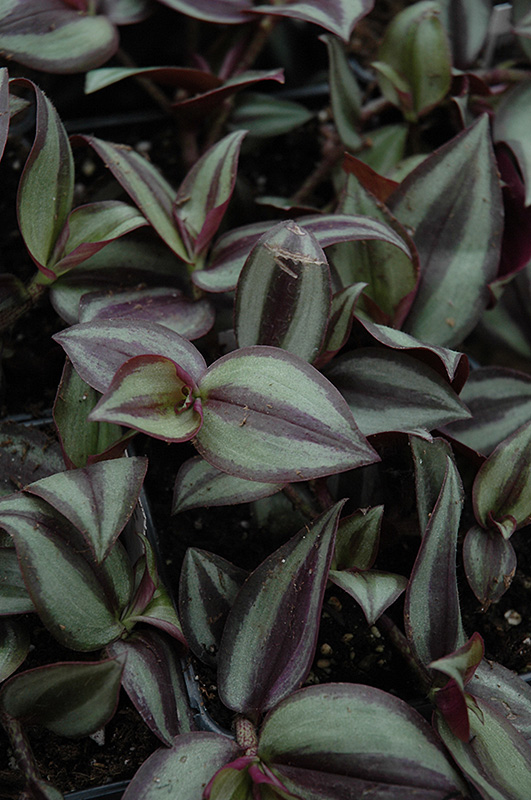>> Home
Height: 14 inches
Spacing: 10 inches
Sunlight:
![]()
![]()
Hardiness Zone: (annual)
Other Names: syn. Tradescantia zebrina, Creeping Jenny
Description:
Now officially known as Tradescantia zebrina; this variety produces lovely leaves of gray green have silver stripes and dark purple reverses; low maintenance, and excellent for containers or massed as groundcover
Ornamental Features
Wandering Jew's attractive pointy leaves emerge purple in spring, turning grayish green in color with curious purple undersides and tinges of silver the rest of the year on a plant with a spreading habit of growth.
Landscape Attributes
Wandering Jew is an herbaceous annual with a ground-hugging habit of growth. Its relatively fine texture sets it apart from other garden plants with less refined foliage.
This is a relatively low maintenance plant, and is best cleaned up in early spring before it resumes active growth for the season. Deer don't particularly care for this plant and will usually leave it alone in favor of tastier treats. It has no significant negative characteristics.
Wandering Jew is recommended for the following landscape applications;
- Mass Planting
- Border Edging
- General Garden Use
- Naturalizing And Woodland Gardens
Planting & Growing
Wandering Jew will grow to be about 14 inches tall at maturity, with a spread of 14 inches. When grown in masses or used as a bedding plant, individual plants should be spaced approximately 10 inches apart. Its foliage tends to remain dense right to the ground, not requiring facer plants in front. Although it's not a true annual, this fast-growing plant can be expected to behave as an annual in our climate if left outdoors over the winter, usually needing replacement the following year. As such, gardeners should take into consideration that it will perform differently than it would in its native habitat. As this plant tends to go dormant in summer, it is best interplanted with late-season bloomers to hide the dying foliage.
This plant does best in partial shade to shade. It prefers to grow in average to moist conditions, and shouldn't be allowed to dry out. It is not particular as to soil type or pH. It is highly tolerant of urban pollution and will even thrive in inner city environments. Consider applying a thick mulch around the root zone in winter to protect it in exposed locations or colder microclimates. This species is not originally from North America. It can be propagated by cuttings.
